Many travelers visit Chiang Rai, a modest city in northern Thailand, located in a province bordering Laos and Myanmar, in search of one of the most popular and arguably most extravagant temples in the country: Wat Rong Khun.
Better known as the White Temple, this stunning tourist attraction draws visitors from all over the world. However, not everyone takes more than a couple of hours to explore the city, getting lost (and allowing themselves to get lost) in one of the most tranquil destinations in Thailand.
Some of the top activities in Chiang Rai include visiting the Black House (Baan Dam), strolling through the night market, and sampling the local cuisine. Beyond the city, there are also many excursions to explore the surrounding area.
Though often overshadowed by its popular neighbor, Chiang Mai, Chiang Rai has its own unique charm and cultural richness. This becomes evident during evenings spent wandering through the market, where vendors from northern tribes, including the Karen ethnic group, offer handmade products and souvenirs.
For those with several weeks to explore Thailand, or for travelers passing through on their way to Laos, Chiang Rai is a peaceful city worth spending a couple of days in. Below, we’ve put together a list of things to see in Chiang Rai.
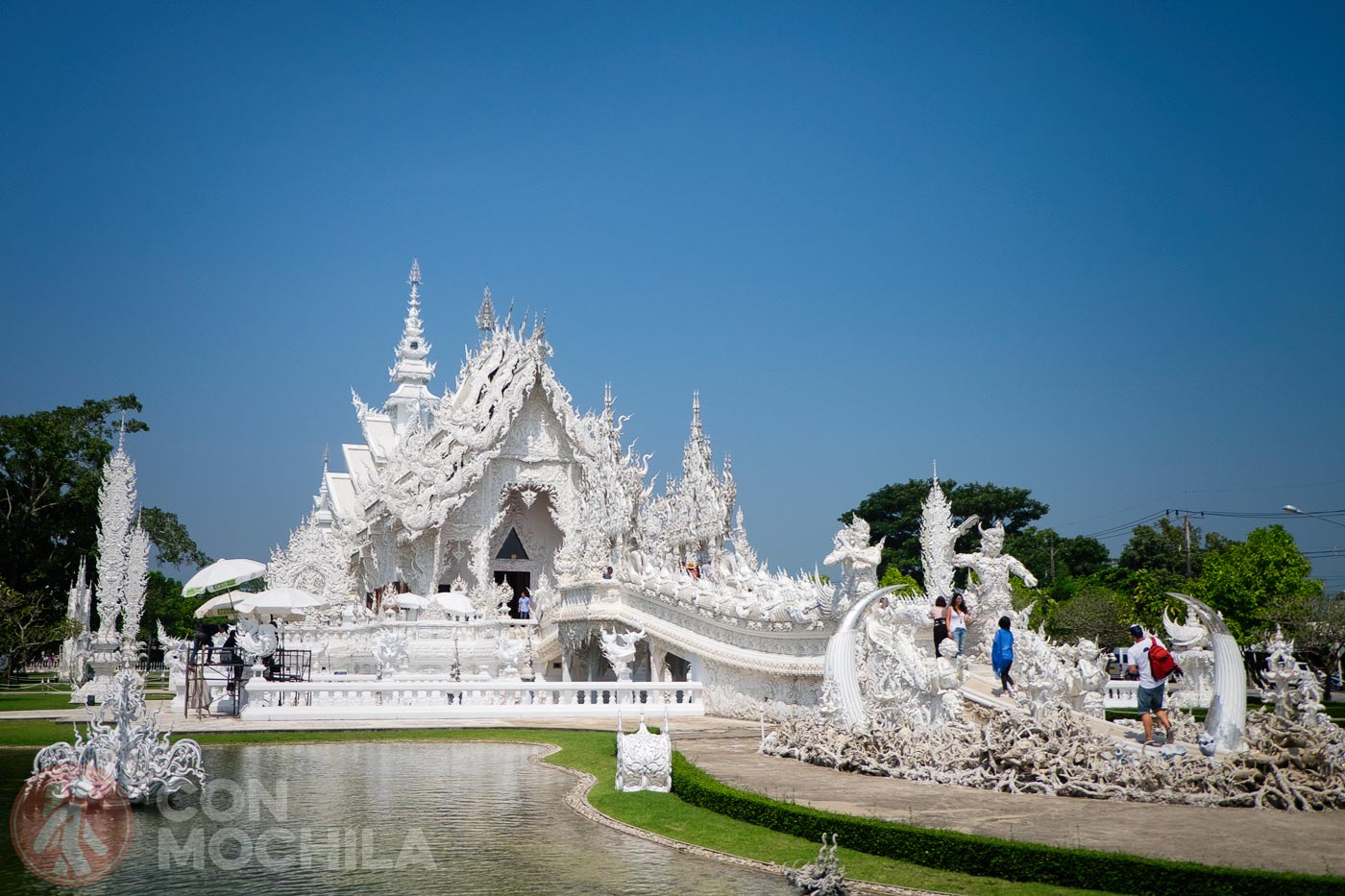
Chiang Rai is located in northern Thailand and has a climate similar to Chiang Mai’s. It experiences a humid tropical climate with two distinct seasons: the high or cool season, and low or rainy season.
Travel Advice: Check out our article on the best time to visit Thailand for month-by-month climate information.
To begin with, we always recommend getting good travel insurance Thailand. This can save you a significant amount on medical expenses and, most importantly, ensures that the insurance covers the costs upfront, so you don’t have to pay out of pocket.
In the previous article, we go into more detail about healthcare in Thailand, as well as tips on how to get the best insurance (and save money).
Nowadays, finding hotels, guesthouses, or restaurants in Thailand with free Wi-Fi is pretty common. However, there are still those who prefer (or need) to stay connected at all times.
That’s why we’ll show you how to get an eSIM Thailand card with internet— now also available with unlimited data.
As mentioned earlier, Chiang Rai is a mountainous city in northern Thailand, and there are several ways to get there.
The cheapest way to travel from Chiang Mai to Chiang Rai is by bus, which takes about 3 to 3.5 hours. Note: During COVID times, you had to book in the same month, as booking months in advance was not available.
Another option is to hire a private taxi or minivan, which has a similar travel time but at a higher cost.
The fastest way to travel from Bangkok to Chiang Rai is by plane, followed by a 13-hour bus journey if you prefer to travel overland.
Wat Rong Khun, also known as the White Temple, began construction in 1997 and is not expected to be fully completed for several decades. You might even catch a glimpse of the artist himself painting on-site, as he sometimes mingles with the crowds of tourists.
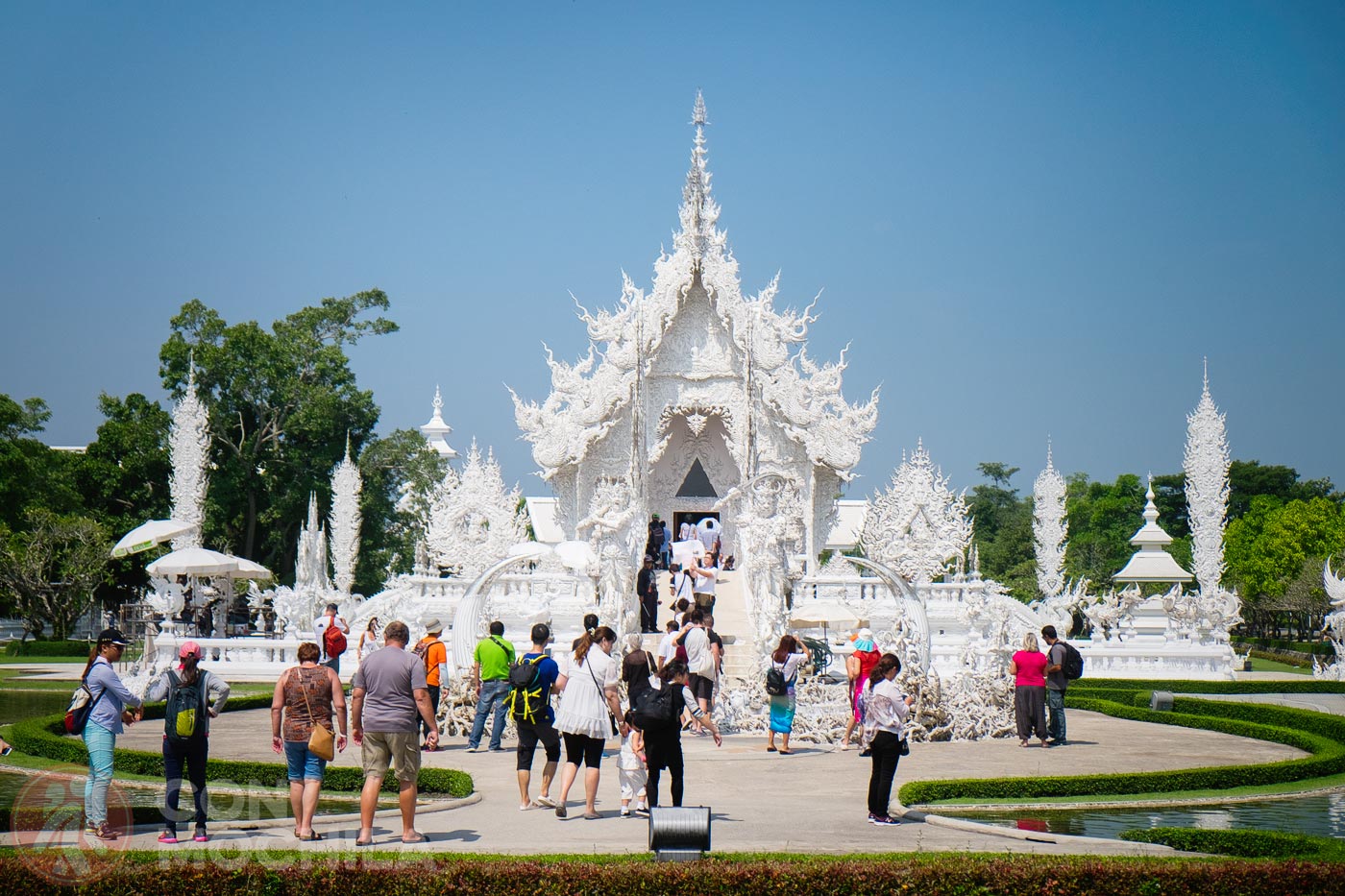
The temple is entirely white and covered with millions of glass pieces, creating a stunning and unique appearance. At Wat Rong Khun, you’ll find both traditional images of Buddha and modern pop-culture characters like Doraemon. It’s one of the most famous temples in Thailand and undoubtedly one of the most original.
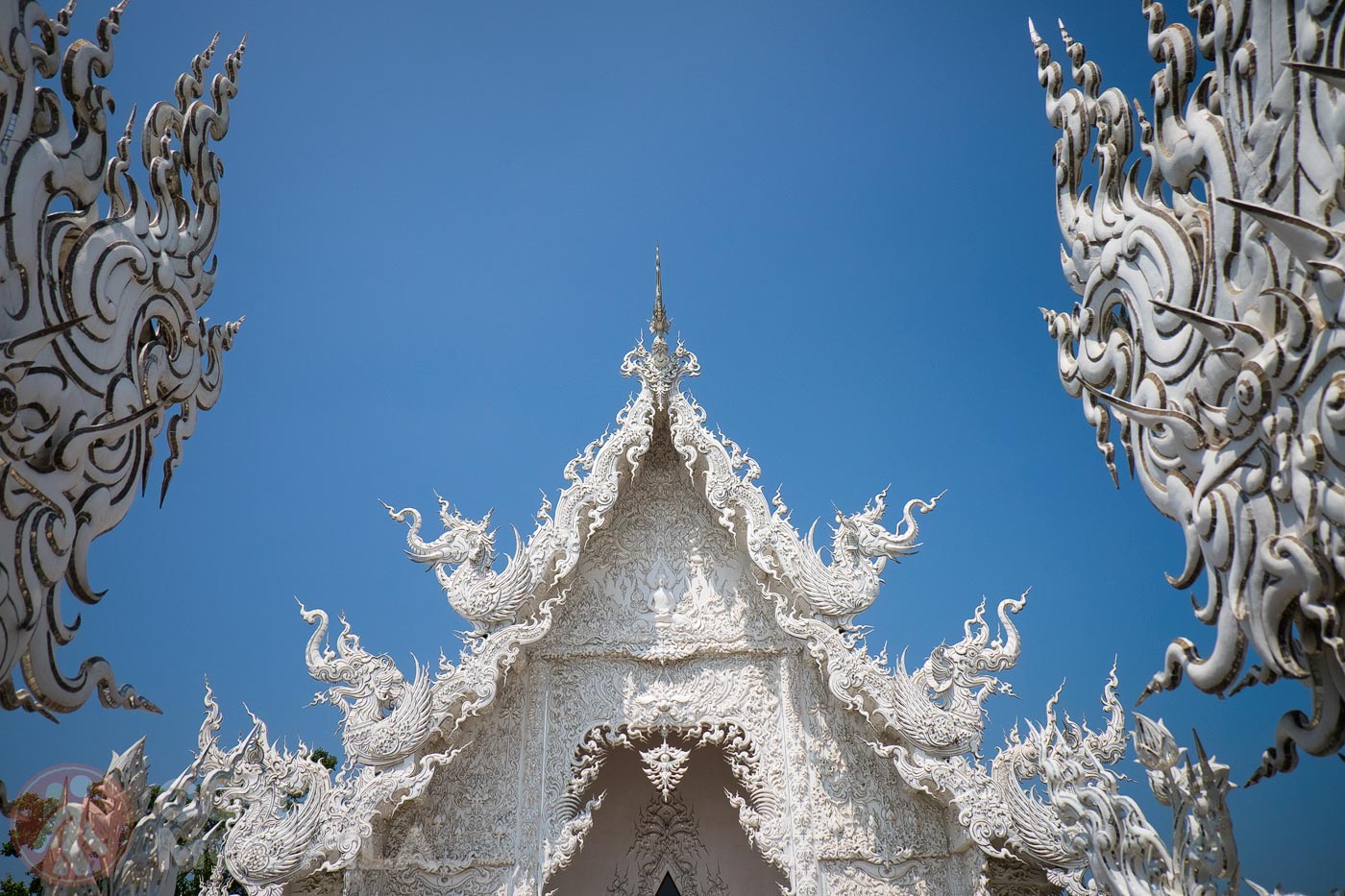
You can visit the temple on a day trip from Chiang Mai, but if time permits, we recommend staying a couple of nights in Chiang Rai. (Entrance fee: 50 baht)
While often referred to as a museum, Baan Dam (The Black House) is hard to categorize. Designed by artist Thawan Duchanee, it is a reinterpretation of an ancient village that leaves visitors both intrigued and puzzled.
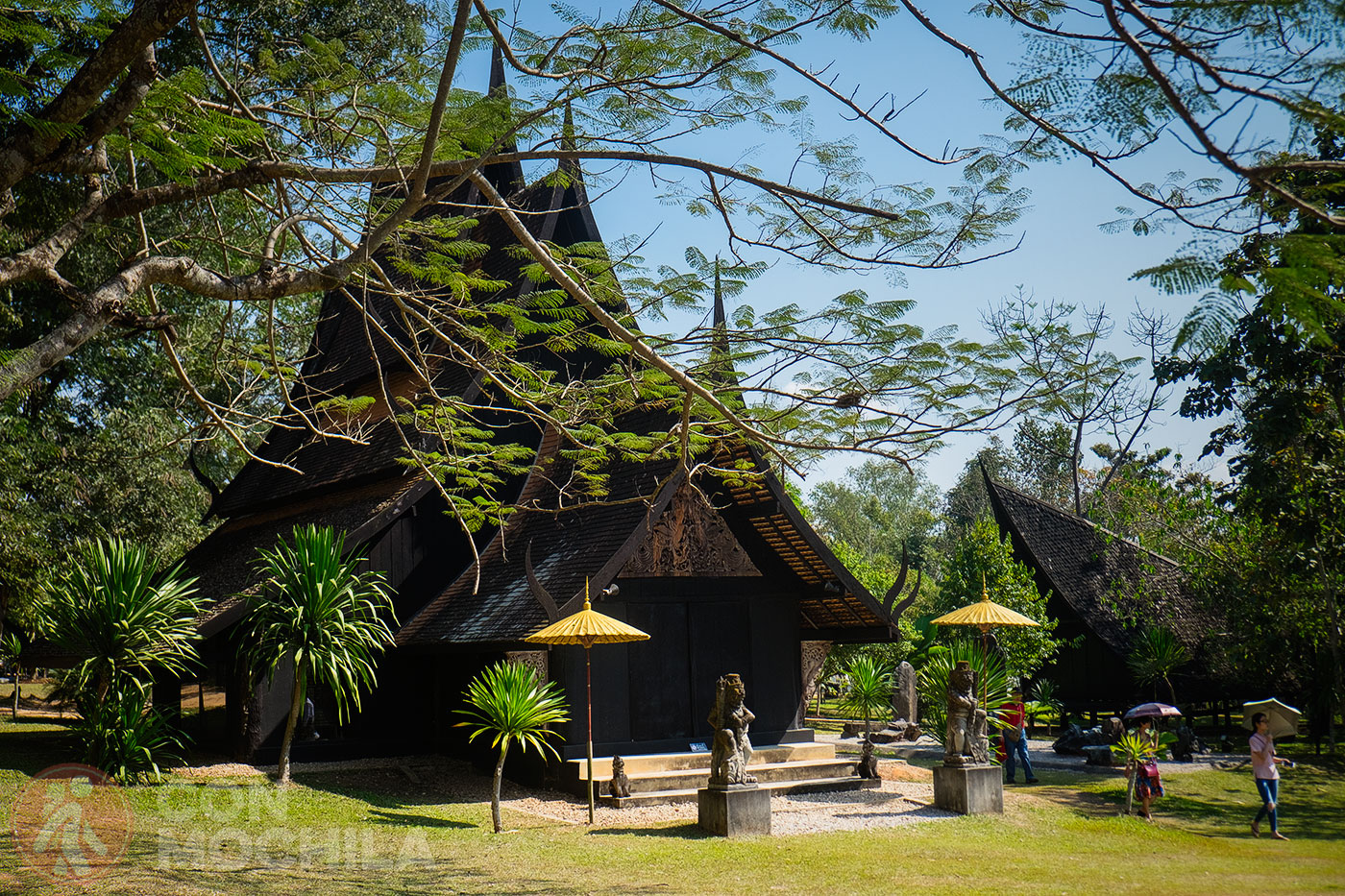
The museum consists of several black huts and white dome-shaped structures, all furnished and decorated with animal skins and bones. Despite its eccentricity, Baan Dam is a popular attraction, especially among local tourists.
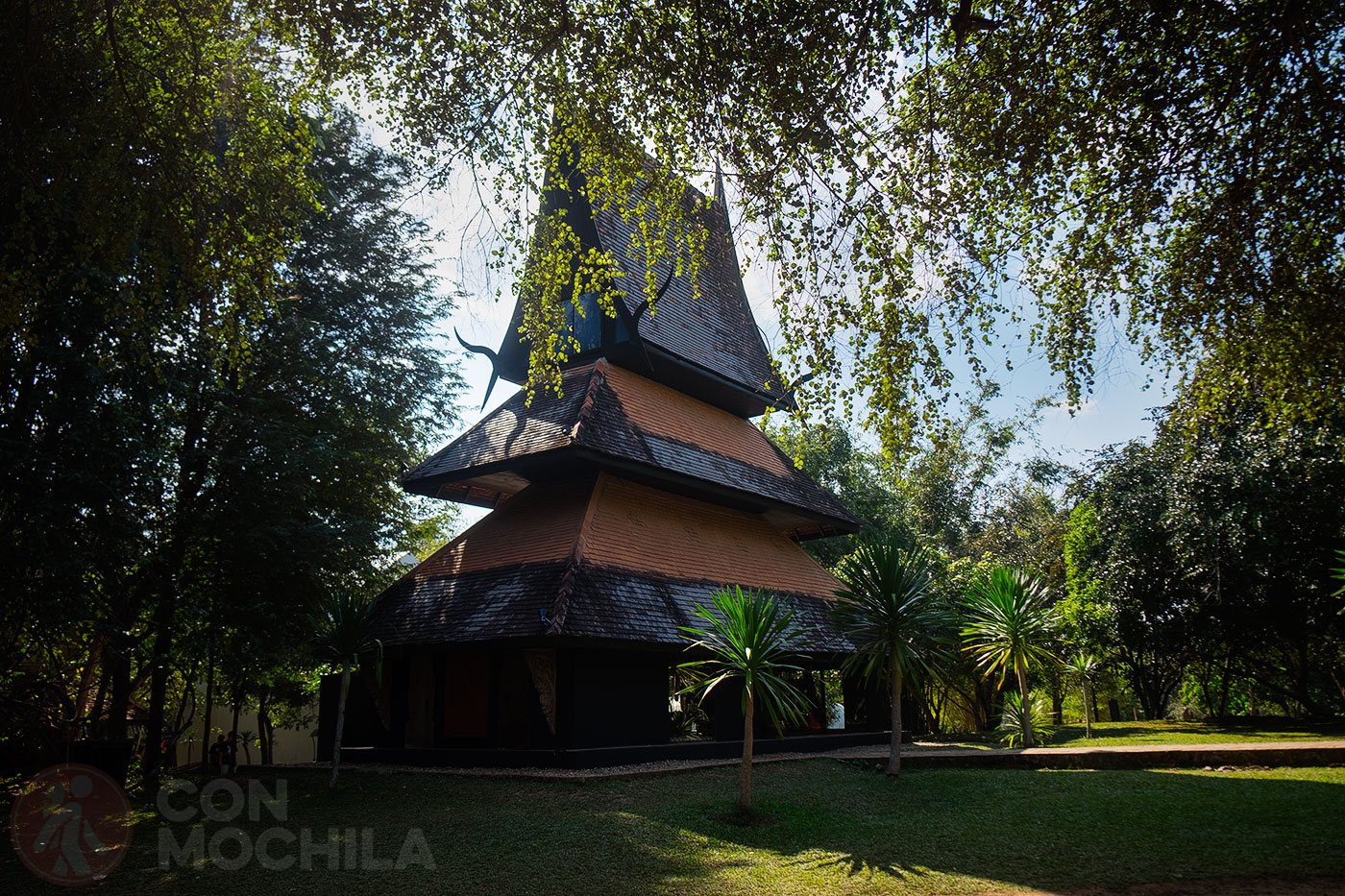

It’s difficult to put into words what you’ll experience here, so it’s best to visit and decide for yourself. (Entrance fee: 80 baht)
De todos los otros templos que hay en Chiang Rai nosotros nos quedamos con el Wat Huay Pla Kung, por ser algo diferente a los que vas a encontrar en cada ciudad de Tailandia.
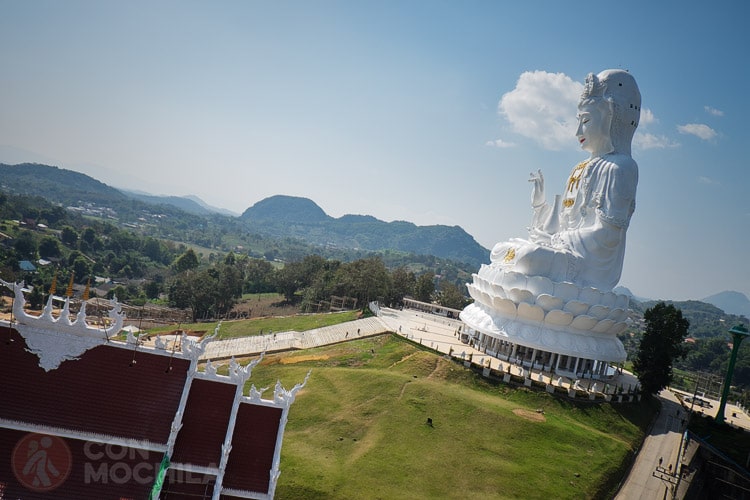
Está situado en las afueras y tiene un chedi de nueve niveles al que se puede subir escalando sus entrañas. Desde la diminuta y claustrofóbica parte de arriba hay unas bonitas vistas de la zona y de los enormes dragones de la entrada. (Entrada gratis)
Although often overlooked compared to Wat Rong Khun, Wat Phra Kaew is worth visiting. It is believed to be the site where the revered Emerald Buddha was discovered in 1434 after a lightning strike hit the chedi. While it may not be particularly striking, it offers a quieter temple experience, free from the large crowds.
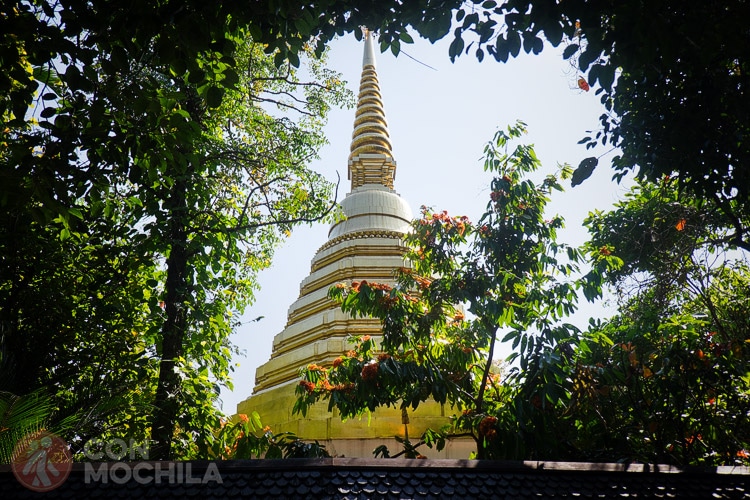
As you explore the city, you’ll eventually come across the golden Clock Tower, located in a roundabout. At night, it lights up with a vibrant display of lights and music. Another notable monument is the golden statue of King Meng Rai, the founder of the Lanna Kingdom in northern Thailand.
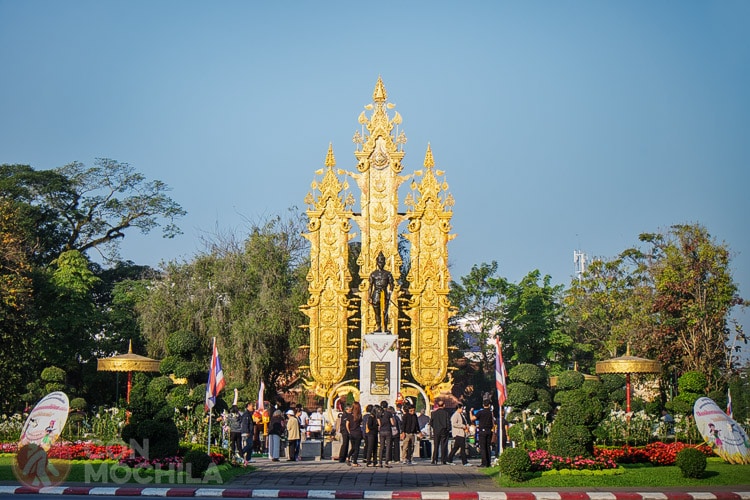
Chiang Rai’s night market has a similar vibe to the one in Chiang Mai, but with far fewer crowds.
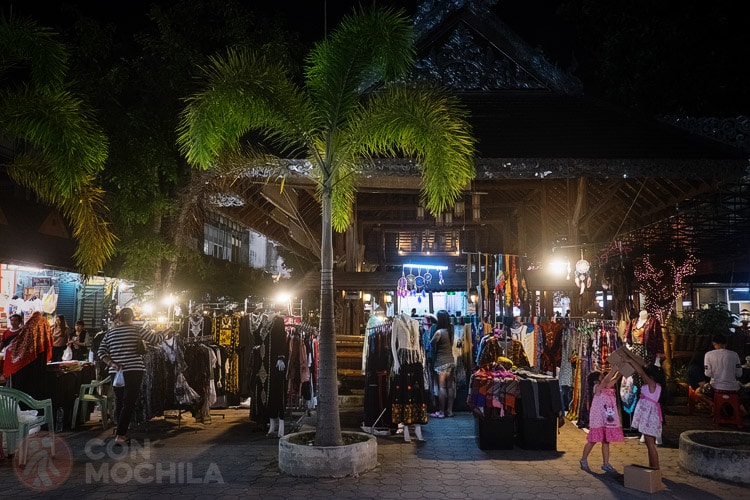
Locals and members of northern ethnic groups gather here to sell souvenirs in a colorful bazaar where you’ll find fabrics, clothing, caps, lanterns, and much more.
There are also several food stalls and a central restaurant where you can enjoy live music. Be sure to try the coconut ice cream, it’s one of the best in Thailand!
Chiang Rai is nestled in a mountainous region, offering plenty of opportunities for excursions in the surrounding areas.
From Chiang Rai, you can book tours to visit the famous Golden Triangle. While this activity is somewhat overrated in our opinion, it does take you to the spot where the Mekong River meets Laos, Myanmar, and Thailand. You can read about our personal experience in this article: Chiang Rai Day Trip: The Golden Triangle and the White Temple.
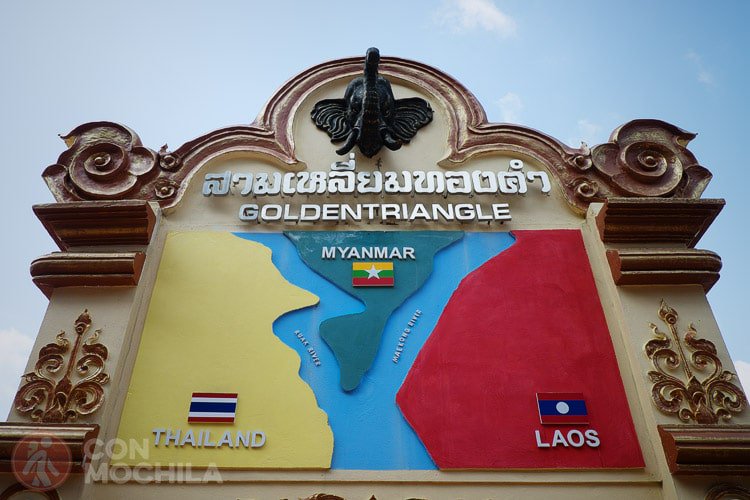
Being in a mountainous area, Chiang Rai offers easy access to trekking and hiking opportunities through tea plantations, rice fields, and stunning natural landscapes. Some excursions also include visits to hot springs, local villages, and the border regions with Laos and Myanmar, where the Mekong River forms a natural boundary.
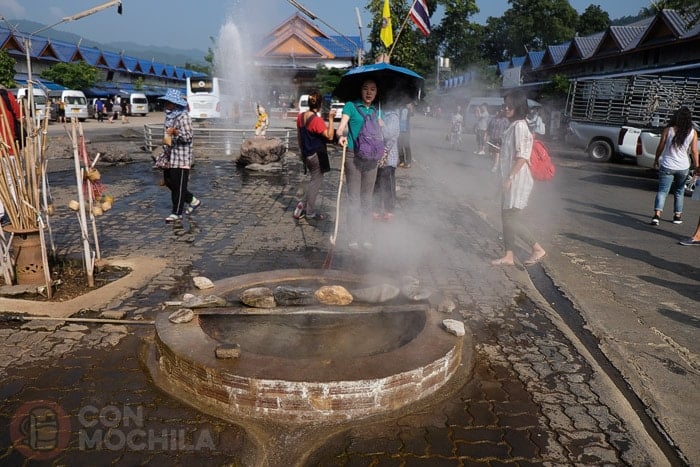
Here are a few ideas for activities:
Having visited Chiang Rai a couple of times, we have two places to recommend:
Chezmoi Handicraft & Homestay: On our first visit, we chose this charming hostel in the city center. The rooms are simple and clean, with shared bathrooms, and breakfast is included for just 400 baht. The hostel offers free Wi-Fi and has a cozy atmosphere (Songkran already loved it).
La Belle Hotel: On our second visit, we stayed at this small hotel as we were traveling with my mother. La Belle offers spacious rooms with a balcony, a private bathroom, air conditioning, and free Wi-Fi, all from 600 baht. They also provide complimentary coffee, tea, and toast at reception in the mornings.
Here are some other accommodations by price range (from cheapest to most expensive) to help you find the one that best fits your budget:
For the best local food, head to the restaurants and food stalls in the square where the night market is held. Two dishes you must try in Chiang Rai are khao soi and, as mentioned earlier, coconut ice cream (which is nothing like the watered-down version sold in some beach towns!).
Finally, we recommend treating yourself at Chivit Thamma, even though it’s a bit above the typical backpacker budget. This colonial-style house by the river offers stunning views, elegant décor, and delicious food. Be sure to try the fried pineapple rice and the khao soi, both are exceptional!
We opted to rent motorbikes to explore the area independently, but you can also hire a taxi or tuk-tuk from most accommodations. This is especially useful since the main attractions are located several kilometers outside the city.
Click on the image and it will take you to a new Google Maps window with all the points of interest to travel around Chiang Rai.